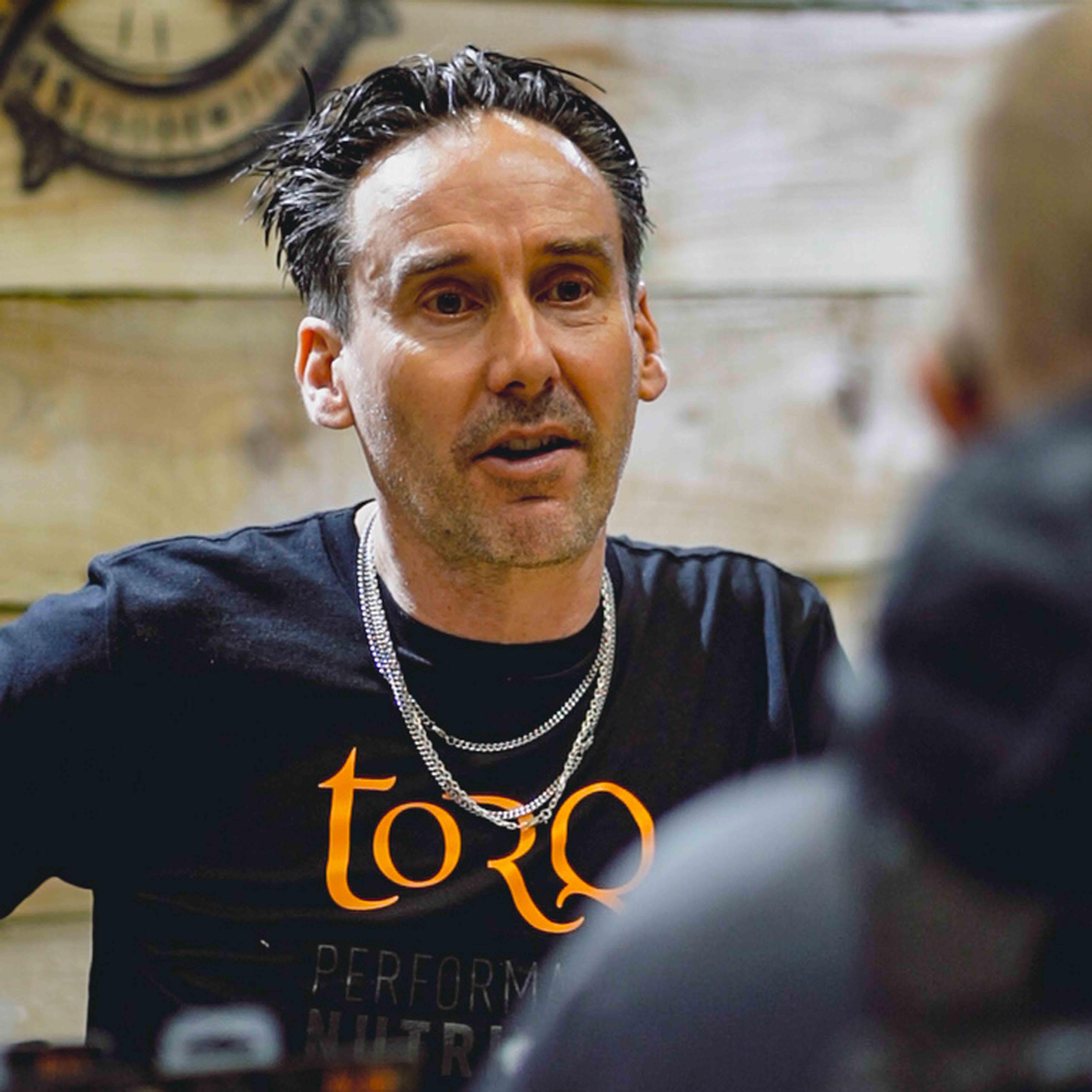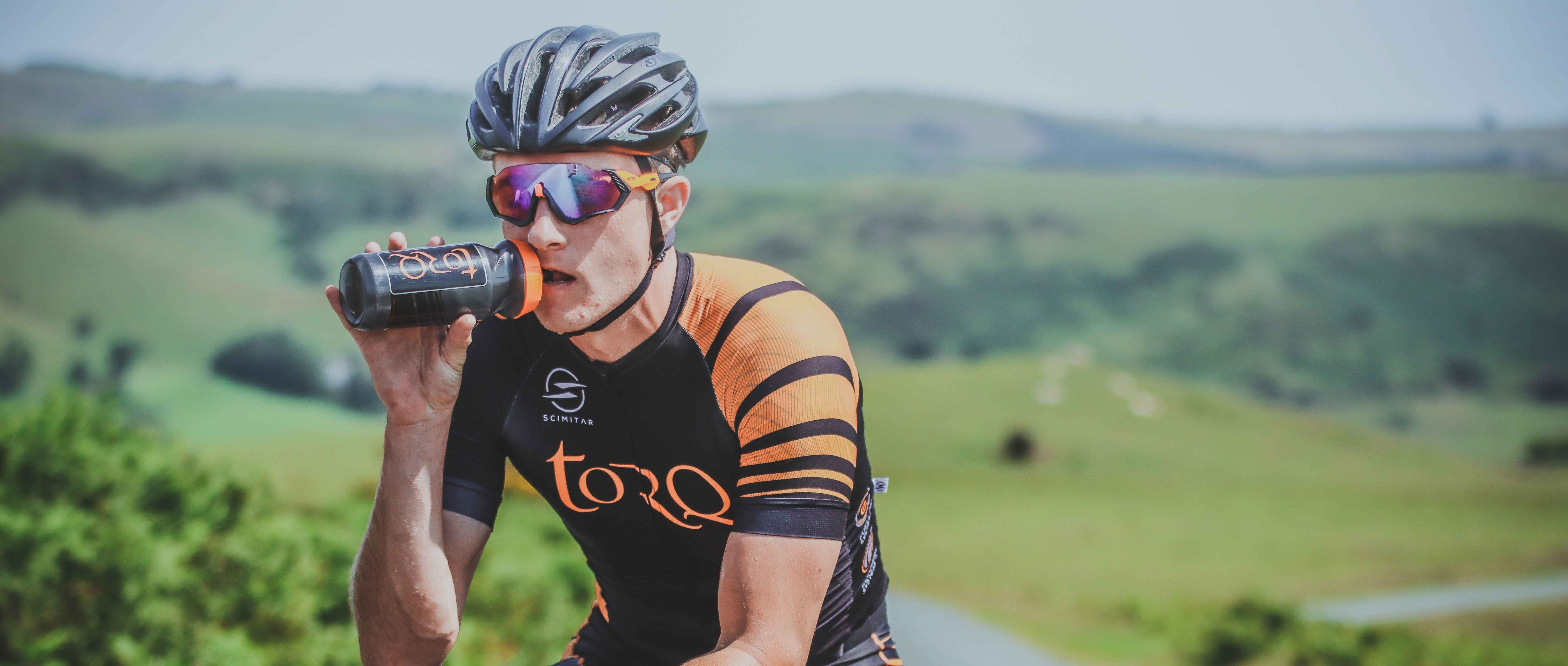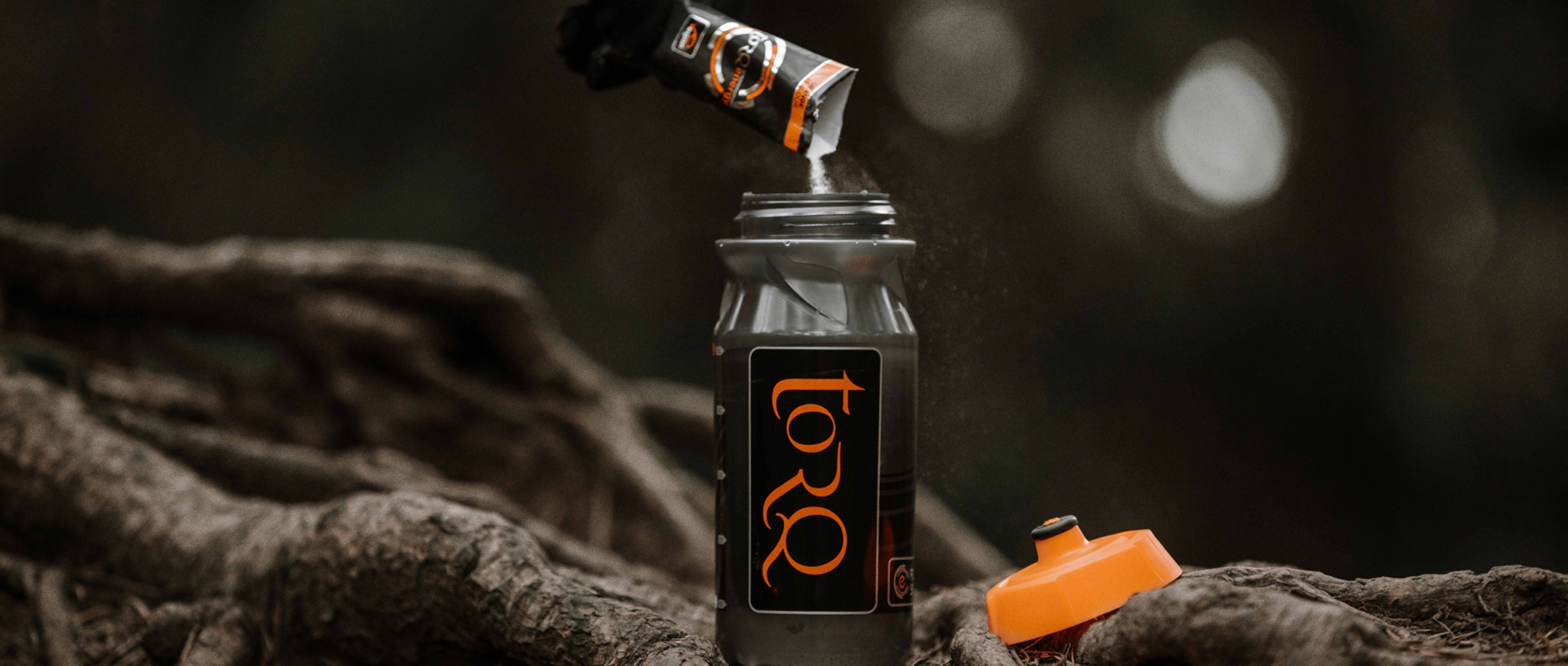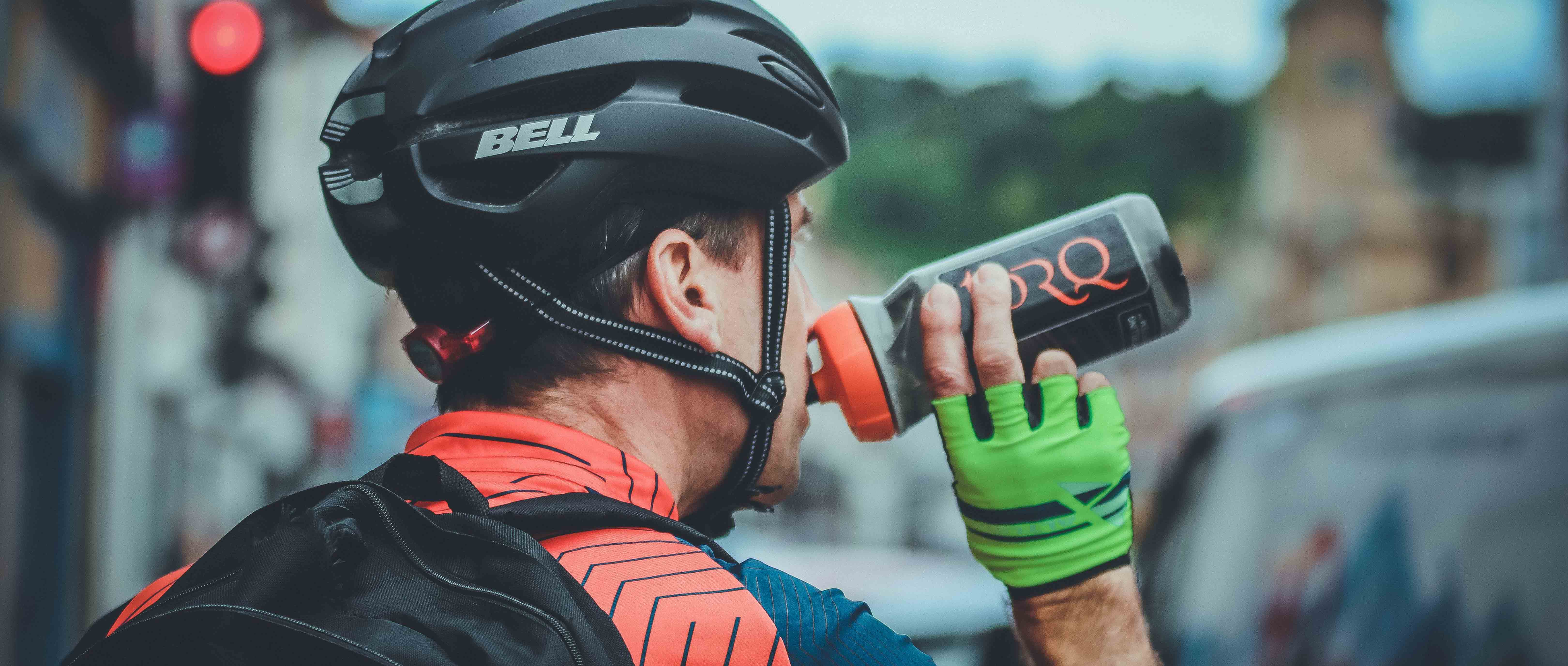In the first of a new series on Gravel Union about the importance of appropriate nutrition for gravel riders, Matt Hart, founder and managing director of TORQ, discusses the topic of hydration. While you might think that swigging on a bottle or two of water during a gravel ride will meet all your hydration needs, Matt looks into the science of efficient hydration and the benefits that it brings.

Hydration plays a vital role in maintaining physical performance and overall well-being, especially during exercise. Water and electrolytes are involved in almost every major physiological process, from regulating body temperature and supporting cardiovascular health to optimising digestion and cognitive function. In this article, we explore why staying properly hydrated matters, what happens when you don’t and how you can approach hydration more effectively before, during and after riding.
Why Water Matters
Water makes up a large portion of the human body - around 60% for the average adult - and it’s essential for numerous bodily functions. While it’s easy to think of water simply as something we drink, it plays many active roles that directly affect physical performance.
Blood Volume and Circulation
One of water’s most important jobs is maintaining the volume of plasma in our blood. Plasma is the liquid portion of blood that transports oxygen, nutrients and hormones throughout the body. When you become dehydrated, blood plasma volume drops and your blood becomes thicker. This makes it harder for your heart to pump blood efficiently, which means it has to work harder - leading to a faster heart rate and increased perceived effort during exercise. Simply put, exercise feels tougher when you're even slightly dehydrated.

Temperature Control
Another crucial role of water is temperature regulation. During exercise, especially in warm or humid environments, your body generates heat. Sweating is the primary way your body cools itself down. However, sweat is mostly water (with some electrolytes) and if you’re not replacing that fluid, your ability to sweat diminishes. As a result, your core temperature can rise to unsafe levels, increasing the risk of heat-related illnesses and reducing your ability to perform at your best.
Mental Sharpness
Hydration also affects the brain. Even mild dehydration - just 1-2% loss of body water, can negatively impact concentration, decision-making and mood. This matters not only in endurance sports but also in activities requiring coordination, tactics and focus. Staying hydrated helps keep your mind clear and responsive.
Digestion and Nutrient Absorption
Water is essential for digestion and for absorbing nutrients from food and supplements. The type of fluid you consume, based on its osmolality, also affects how quickly it’s absorbed. Osmolality refers to the concentration of dissolved substances in a solution. Hypotonic solutions (lower concentration than blood) are absorbed more quickly, while hypertonic solutions (higher concentration) may draw water into the gut and slow absorption, potentially causing discomfort if you’re already dehydrated. An isotonic regimen is considered the ‘sweet spot’ for endurance cyclists, balancing both hydration and fuelling needs. More about fuelling in next month’s article.

Understanding Electrolytes
Whilst water is critical, it’s not the whole story. Electrolytes - minerals like sodium, potassium, magnesium, calcium, and chloride - are equally important for maintaining fluid balance and supporting key bodily functions.
- Sodium is the primary electrolyte lost in sweat. It helps retain fluid, triggers thirst and supports muscle and nerve function.
- Potassium works alongside sodium to regulate fluid inside and outside of cells.
- Magnesium supports muscle contractions, energy production and nerve signalling.
- Calcium plays a role in muscle contraction and bone health.
- Chloride helps maintain fluid balance and supports nerve activity.
If you drink a lot of plain water without replacing lost electrolytes, you risk developing an imbalance - especially in hot or prolonged exercise scenarios. A condition called hyponatremia (low blood sodium levels) can occur, which in severe cases can be life-threatening. While rare, it highlights the importance of consuming fluids that contain electrolytes during and after intense or prolonged exercise.
Carbohydrate and Facilitated Hydration
They say a picture explains 1000 words – so please watch this very short video to learn how vitally important glucose is as a facilitator to the hydration process. For every molecule of glucose and two sodium molecules present, 260 water molecules are driven into the blood from the intestine. This is why plain water and even sugar-free electrolyte tablets, sold specifically as a hydration aid, are sub-optimal in their abilities to hydrate the human body.
Hydration Before Exercise
Starting your ride well-hydrated sets the foundation for better performance and recovery. One practical way to check your hydration status is by observing the colour of your urine. Pale yellow generally indicates good hydration, whilst darker shades may suggest dehydration.
A few hours before exercise, aim to drink water or a low-carbohydrate electrolyte drink to ensure your body has sufficient fluids. As a general guideline, consuming 5–7 ml of fluid per kilogram of body weight about four hours before activity is a good start. If your urine is still dark, another 3–5 ml/kg about two hours before may help.
For example, someone weighing 75 kg could drink around 375–525 ml initially, followed by another 225–375 ml if necessary. Avoid over-drinking, as that can also be problematic. The goal is to reach a comfortably hydrated state, not to overcompensate.

Staying Hydrated During Exercise
Your hydration strategy during exercise depends on several factors - duration, intensity, temperature and individual sweat rate. The goal is to minimise fluid loss without overloading your stomach.
Shorter Rides (Under an hour): If you're riding for less than an hour, particularly in a cool environment, you may not need to drink much, if at all. However, if it's hot or humid, or the workout is particularly intense, drinking a small amount of a low-concentration electrolyte solution can help replace sweat losses quickly and improve absorption.
Longer Rides (Over an hour): For endurance exercise lasting more than an hour, hydration becomes more complex. In addition to fluid and electrolytes, your body also needs carbohydrates to fuel performance. Drinks that contain both electrolytes and carbohydrates in the right proportions can help meet these needs efficiently. Again, we’ll tackle the subject of fuelling next month to ensure you get the balance right.
Aim to drink enough to match your sweat rate. Most people can comfortably consume 500 ml to 1 litre of fluid per hour, although individual tolerances vary. Trained athletes may need more and can train their bodies to tolerate more, especially in hot weather. Developing your own hydration plan through trial and error - guided by how you feel and perform - can be very effective. It’s also helpful to listen to your body. While thirst is a useful indicator, it doesn't always kick in early enough during intense or prolonged exercise. So, staying ahead of thirst, without over drinking, is generally recommended.
After Exercise: After a ride, the goal is to replace fluids and electrolytes lost in sweat and to support recovery. How much you need to rehydrate depends on your hydration status during the session and how much fluid you have lost. If you finished your workout significantly dehydrated, it’s important to replace not just what you lost but a little more to account for ongoing fluid loss through urine.
Consuming a drink that includes both electrolytes and carbohydrates can help restore fluid balance and kickstart muscle recovery. Some post-exercise recovery drinks also include protein, which supports muscle repair and reduces muscle soreness. If you don’t have a specialised drink, water combined with a salty snack or a balanced meal can also help you rehydrate and replace lost nutrients. The key is to act relatively soon after exercise, especially if you have another ride planned within 24 hours.

Putting it all together: A personalised approach
Hydration isn’t a one-size-fits-all formula. Your needs will vary depending on your sweat rate, exercise conditions, fitness level and personal preferences. Here are some general principles to guide your approach:
- Pre-exercise: Start hydrated. Drink fluids steadily in the hours leading up to your ride.
- During exercise: Match fluid intake to sweat loss as closely as possible. Include electrolytes and carbohydrates – the amount will depend on the duration of your ride.
- After exercise: Replace lost fluids and electrolytes and support recovery with carbs and protein.
For those engaged in regular training or long events, it may be helpful to measure your sweat rate. Weighing yourself before and after exercise (without clothing) can give you a rough idea of how much fluid you lose per hour. This can help fine-tune your hydration strategy over time.
Final Thoughts
Hydration is one of the most important and controllable factors in physical performance. Proper hydration can improve endurance, reduce fatigue, support mental sharpness and help you recover faster. On the flip side, dehydration - even in mild forms - can reduce your ability to perform and think clearly.
By staying aware of your fluid and electrolyte needs and making small adjustments based on how you feel and what works best for your body, you can make hydration a powerful tool in your performance and recovery toolkit.
Let your thirst guide you, but don’t ignore the science - hydration done right is a performance booster, not just a comfort measure.
If you would like to find even more detailed information about hydration, Matt has created a longer article on the Torq website. You can find details of Torq’s range of hydration products here.
All images courtesy of Torq.